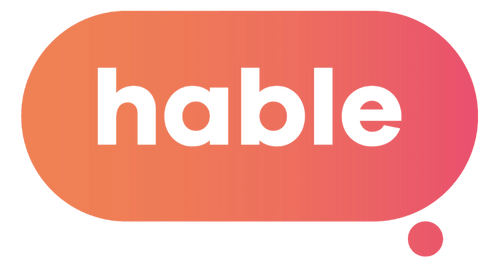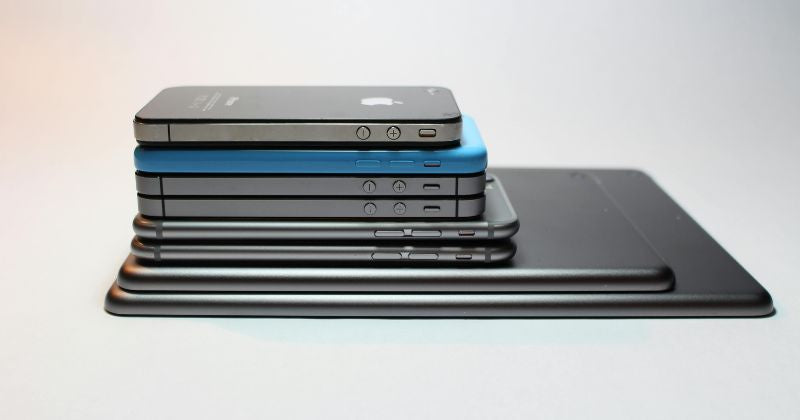In today’s world, the sheer variety of smartphones and mobile devices can be overwhelming. From mainstream phones that everyone uses to devices specifically designed with accessibility in mind, finding the perfect phone can be a challenge. For blind and visually impaired users, this decision is even more critical, as the right phone can significantly enhance daily life and independence.
Whether you're looking for a standard smartphone equipped with assistive technology, or a phone specifically optimized for the needs of the visually impaired, making an informed choice is essential. After all, a phone is not just a communication tool but a long-term investment in your accessibility and quality of life.
In this blog, we’ll walk you through everything you need to know. We’ll explore the benefits and limitations of regular smartphones with accessibility features, highlight five of the best phones specially designed for blind and visually impaired users, and provide tips on how to choose the right device for your unique needs.
Let’s dive in and find the perfect phone for you!
Type of cellphones
When it comes to choosing the right cellphone, the options are diverse. You can often use a standard smartphone, which, with the right accessibility settings, can cater to many needs.
However, there are times when a specialized phone, designed specifically for blind and visually impaired users, might be more suitable. Additionally, pairing a regular phone with an accessibility device like the Hable One can significantly enhance usability, offering a middle ground between the two.
In this section, we’ll explore the three main types of phones available: standard smartphones, specialized phones for the blind, and regular phones enhanced with additional accessibility devices.
We’ll discuss when each option might be the best fit for your needs and how these different types of phones can provide varying levels of independence and convenience.
In the following sections, we'll dive deeper into each category to help you make an informed decision.

Regular smartphones
When it comes to accessibility for blind and visually impaired users, standard smartphones—particularly the iPhone—stand out as excellent choices.
The iPhone was a trailblazer in this area, being the first smartphone to integrate accessibility features specifically for the blind. Its built-in screen reader, VoiceOver, set the standard for accessibility on mobile devices, making it a popular choice among blind users.
Why the iPhone is a Top Choice:
- VoiceOver: The first and most refined screen reader on a smartphone, making navigation intuitive and efficient.
- Consistent Accessibility: Apple ensures that nearly all apps on the App Store are accessible with VoiceOver, minimizing the chances of encountering inaccessible software.
- User-Friendly Design: The iPhone's consistent user interface across all models ensures a smooth experience for all users.
Android as an Alternative:
- Initial Challenges: Android initially struggled with accessibility, especially with its TalkBack screen reader, which wasn’t as polished as VoiceOver. Early versions made typing and navigating more difficult, and not all pre-installed apps were accessible.
- Significant Improvements: Over the years, Google has made great strides in enhancing Android’s accessibility. TalkBack has become a strong competitor to VoiceOver, making Android phones a viable option for blind users.
- Flexibility: Android allows for more customization and flexibility, such as installing apps from outside the Google Play Store, which can be useful for tech-savvy users or those in IT fields.
When deciding between these options, the iPhone is often the best choice for users who prioritize accessibility and want a seamless experience with minimal issues.
It’s particularly suited for those who want reliable accessibility across most apps without needing to worry about compatibility. On the other hand, an Android phone might be more appealing to users who value flexibility and customization.
If you’re someone who likes to tinker with your device or need to install third-party apps, Android’s openness and customization options could be more suitable, even if it means encountering occasional accessibility challenges.

Both iPhones and Android phones offer significant benefits, including access to the same apps and features as sighted users, strong community support, and extensive functionality.
However, they do come with some downsides, particularly when it comes to typing and navigation, which can be more challenging without additional tools. If typing on these devices proves difficult, assistive technologies like the Hable One can greatly improve the user experience, a topic we’ll explore further in the final section.
Phones for people with low Vision or Blindness
When it comes to specialized phones designed for individuals with low vision or blindness, several models stand out for their accessibility and user-friendly features. Each of these phones offers unique benefits tailored to the needs of visually impaired users.
BlindShell
The BlindShell is a highly accessible phone that’s particularly user-friendly, thanks to its easy-to-navigate menu and T9 keyboard. What sets it apart is the built-in voice assistant, which allows you to open apps, make calls, and write messages without needing to rely solely on the keyboard.
The BlindShell operates on a simplified version of Android, making it nearly impossible to get lost in the menus. It also includes a physical SOS button, a critical feature for emergencies.
However, its limited features mean it may not support all the functions a user might need. The BlindShell is available in two models: the Classic 2, priced at €529, and the Classic Lite, priced at €269.

SmartVision 3
SmartVision has long been a pioneer in developing smartphones for the blind and visually impaired, with the Smart Vision 2 being one of their most popular models. Their latest offering, the Smart Vision 3, builds on this legacy.
Unlike the BlindShell, this phone runs a full-featured version of Android. The Smart Vision 3 provides three methods of control: a T9 keyboard, a touchscreen, and a voice assistant.
This flexibility allows users to choose their preferred method of interaction, whether it’s through touch gestures or the physical keyboard. While it offers high-quality features, the phone comes with a steep price tag of €755.

MiniVision 2+
For those who prefer a feature phone, the MiniVision 2+ is an excellent option. It’s controlled using a T9 keyboard and is unique among feature phones for its voice assistant, which simplifies tasks like writing messages.
The MiniVision 2+ is ideal for users who want a fully accessible phone without the complexities of a smartphone. It is priced at €415.

Now there are many more Phones specifically developed for people with blindness or low Vision. This is merely a subset. They do give a good overview of the typical features and pricing for these type of phones and represent a good summary of what you can expect.
Assistive Technology
For those who want the full benefits of a regular smartphone but find the touchscreen interface challenging, assistive technology offers an excellent solution.
Devices like the Hable One and Hable Easy can remove the barriers often associated with typing and navigating on a smartphone, allowing you to enjoy all the features of a modern device without the frustrations.
Both the Hable One and Hable Easy connect to your smartphone via Bluetooth and feature 8 buttons, but they serve different needs:
Hable One:
- Uses Braille for typing and controlling your smartphone.
- Ideal for users familiar with Braille who want a seamless way to interact with their device.
- Offers full control over your smartphone, making it a powerful tool for accessibility.
Hable Easy:
- Does not require Braille knowledge, as each button has a distinct function.
- Perfect for those new to assistive technology or who are just getting used to using a smartphone.
- Simplifies smartphone use without compromising on functionality.
One thing to keep in mind is that these devices are additional items you’ll need to carry with you, so there’s a chance you might forget them or misplace them. However, the enhanced accessibility and ease of use they provide make this a minor inconvenience.
The benefits of having these tools at your disposal, particularly in making your smartphone experience more manageable and enjoyable, far outweigh any drawbacks.

These devices are especially useful for those who want to enjoy the power of a regular smartphone but may struggle with the touchscreen.
With the Hable Easy, for example, there’s nothing holding you back from fully embracing the smartphone experience, making these assistive technologies a valuable addition to your daily life.
Choosing the Right Cellphone for Your Needs
Selecting the best cellphone for your needs as a blind or visually impaired user comes down to understanding your personal preferences and daily requirements.
Whether you prefer the accessibility of an iPhone, the flexibility of an Android device, or the simplicity of a specialized phone like BlindShell or SmartVision 3, there’s a perfect fit for everyone.
Additionally, assistive technologies like the Hable One and Hable Easy can further enhance your smartphone experience, making navigation and typing easier and more intuitive.
Ultimately, the key is to choose a device that aligns with your comfort level and lifestyle, ensuring that you have the tools you need to stay connected and independent.
With the right cellphone and assistive technology, you can fully enjoy the benefits of modern communication, tailored specifically to your needs.
FAQ
1. What is the best smartphone for blind users in 2024?
The iPhone remains one of the best smartphones for blind users due to its robust VoiceOver feature and consistent accessibility across apps. Android devices have also improved significantly, with TalkBack now being a strong alternative.
2. Are there specialized cellphones for the blind in 2024?
Yes, phones like the BlindShell Classic 2 and SmartVision 3 are designed specifically for blind and visually impaired users. These phones offer simplified menus, physical buttons, and voice assistants tailored to accessibility needs.
3. How does the Hable One enhance smartphone accessibility?
The Hable One connects via Bluetooth and uses Braille, allowing blind users to type and control their smartphone more easily. It’s ideal for those who find touchscreen typing challenging.
4. Can I use a regular smartphone if I’m blind?
Absolutely! Regular smartphones, especially iPhones, offer built-in accessibility features like VoiceOver and TalkBack, making them fully usable for blind users with the right settings.
5. What are the key differences between the Hable One and Hable Easy?
The Hable One uses Braille for input and control, while the Hable Easy simplifies smartphone use without requiring Braille knowledge. Both devices enhance accessibility but cater to different user needs.
6. How do I choose between a specialized phone and a regular smartphone with assistive technology?
Your choice should depend on your comfort with technology, your need for specific apps, and whether you prefer a simplified phone or a regular smartphone enhanced with devices like the Hable One.
7. What are the benefits of using a specialized phone like BlindShell over a regular smartphone?
Specialized phones like BlindShell offer simpler interfaces, physical buttons, and built-in accessibility features, making them easier to use for those who are not comfortable with touchscreen devices or complex menus.
8. How has Android improved its accessibility for blind users in recent years?
Android has made significant strides with its TalkBack screen reader, offering better typing experiences, more accessible pre-installed apps, and greater customization options compared to earlier versions.
9. Is the Hable Easy a good option for someone new to smartphones?
Yes, the Hable Easy is an excellent choice for beginners, as it simplifies smartphone navigation with dedicated buttons for specific functions, eliminating the need for Braille knowledge and making it user-friendly for those new to assistive technology.


1 comment
Francisco J
… muy agradecido y satisfecho por la información que nos proporcionan, es un gran trabajo.
Muchísimas gracias